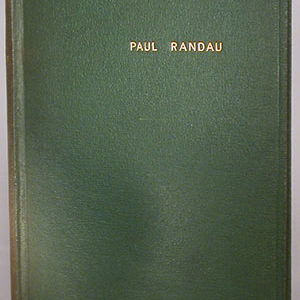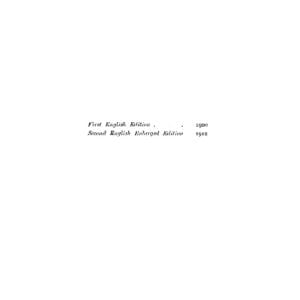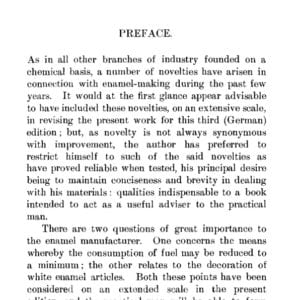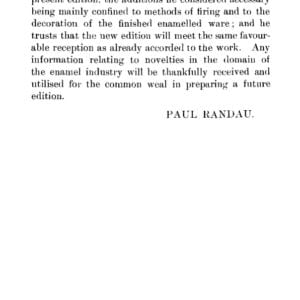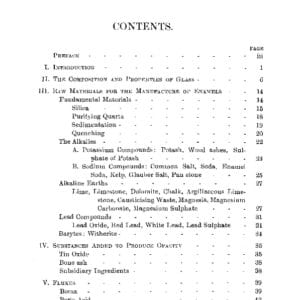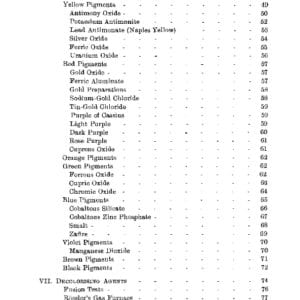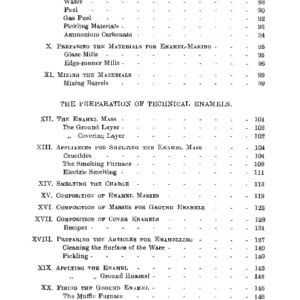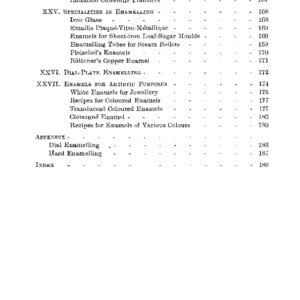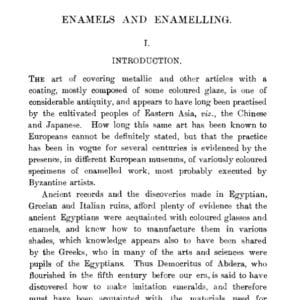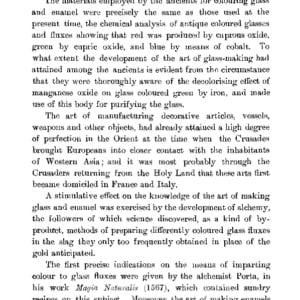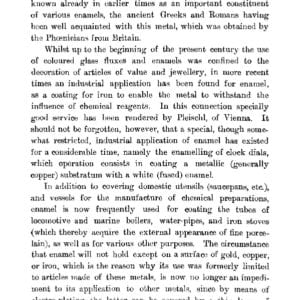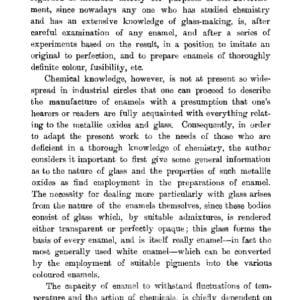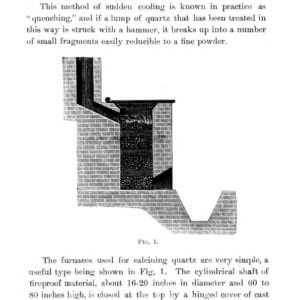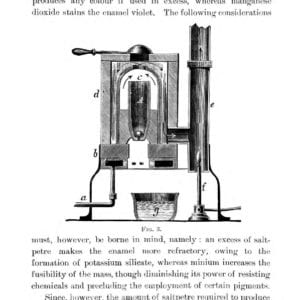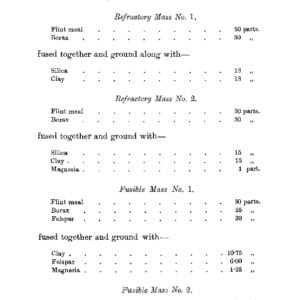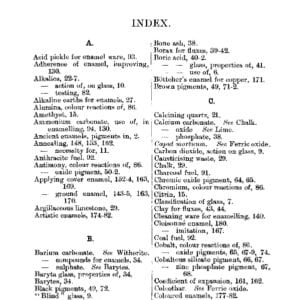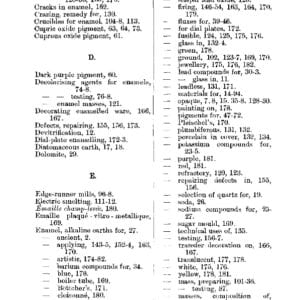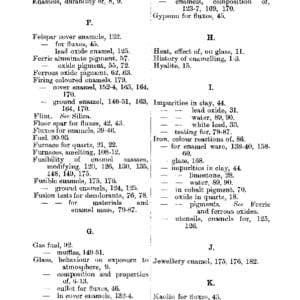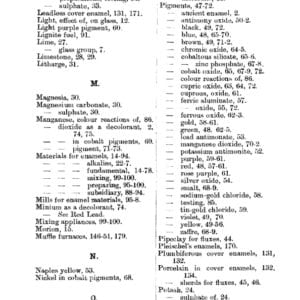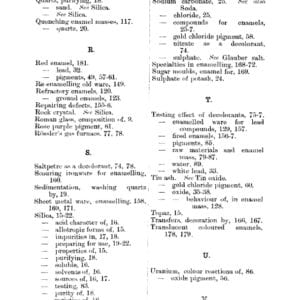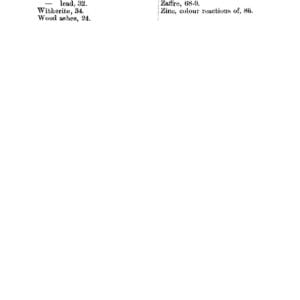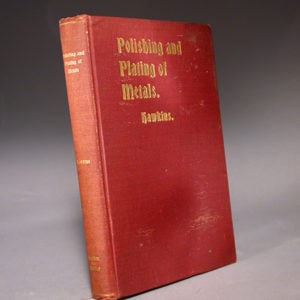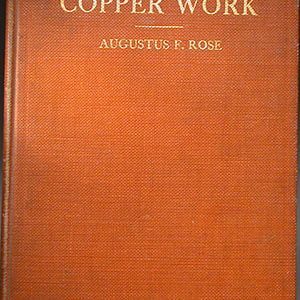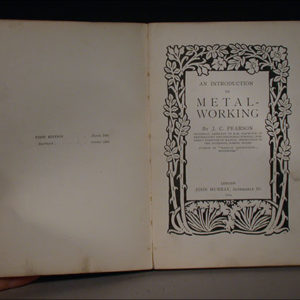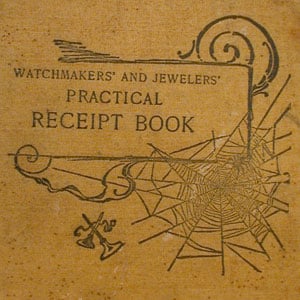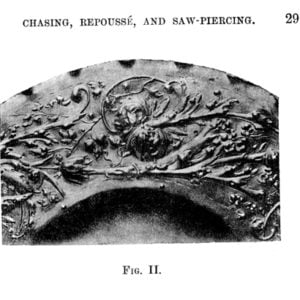Enamels and Enamelling by Paul Randeau (translated from German by Charles Salter), 1912
Subitile: “An Introduction to the preparation and application of all kinds of enamels for technical and artistic purposes. For enamel makers, workers in gold and silver and manufacturers of objects of art”
This 1912 book, 206 pages jam-packed with serious information about manufacturing enamels. It is a second edition from one published in 1900. For a glass, ceramics or enameling person the book is essential for the library and for understanding their field. A goldsmith, or someone interested in how things are made will also want it. If you were working with enamel this is an absolute essential. I suspect it is the most informative on the subject ever written.
The information is the deepest I have seen on the preparation of enamel, what chemicals and oxides make what colors, and what purposes. Understanding the chemistry of enamel is important in diagnosing problems and successfully enameling work at a deep level.
Chapters include:
- The composition and properties of Glass
- The raw materials for the manufacture of enamels
- Substances added to produce opacity
- Fluxes
- Pigments
- Decolorizing agents
- Testing the raw materials and enamel mass
- Subsidiary materials
- Preparing the materials for enamel-making
- Mixing the materials
- The enamel mass
- Appliances for smelting the enamel mass
- Smelting the charge
- Composition of enamel masses
- Composition of masses for ground enamels
- Composition of cover enamels
- Preparing the articles for enameling
- Applying the enamel.
- Firing the ground enamel.
- Applying and firing the cover enamel or glaze.
- Repairing defects in enameled ware
- Enameling articles of sheet metal
- Decorating enameled ware
- Specialties in enameling
- Dial-Plate enameling.
- Enamels for Artistic purposes.
The book begins with a history of enamel use by country. An interesting discussion of the influence of alchemy on discovering new glasses (fluxes) and their coloring information.
The discussion on glasses is excellent, interesting and thorough. Lots of detailed information about resistance and principles of designing glasses. From scratch, all the earths, sources of clean silica, cleaning, preparation and more. Great chemistry, clearly written. An enormous ranges of sources for materials are described including many odd ones, like kelp. Much of the book is about making large quantities of material, but so much of it is useful for understanding the material and how to work with it. There is the occasional mis-match to today’s knowledge, such as no warnings on radiation for working with uranium compounds – they did not know about it at this time. This is however a minor note considering the excellence of everything else.
The section testing materials and analyzing what is in a melt is extensive and solid. Pickles, fluxes and salts are extensively dealt with. There are dozens of recipes for all sorts of enamels and more.
There are interesting oddities like how to emulate granite using enamel, the use of transfers, imitation cloisonn? transfers, and more.
A superb book, possibly the best in its field, and a refreshing insight into the chemical truth of enamels and enameling. Finally there is a comprehensive set of descriptions of the kinds of artistic enameling.
Charles Lewton-Brain © 2012
File Size: 15MB, 206 Pages
